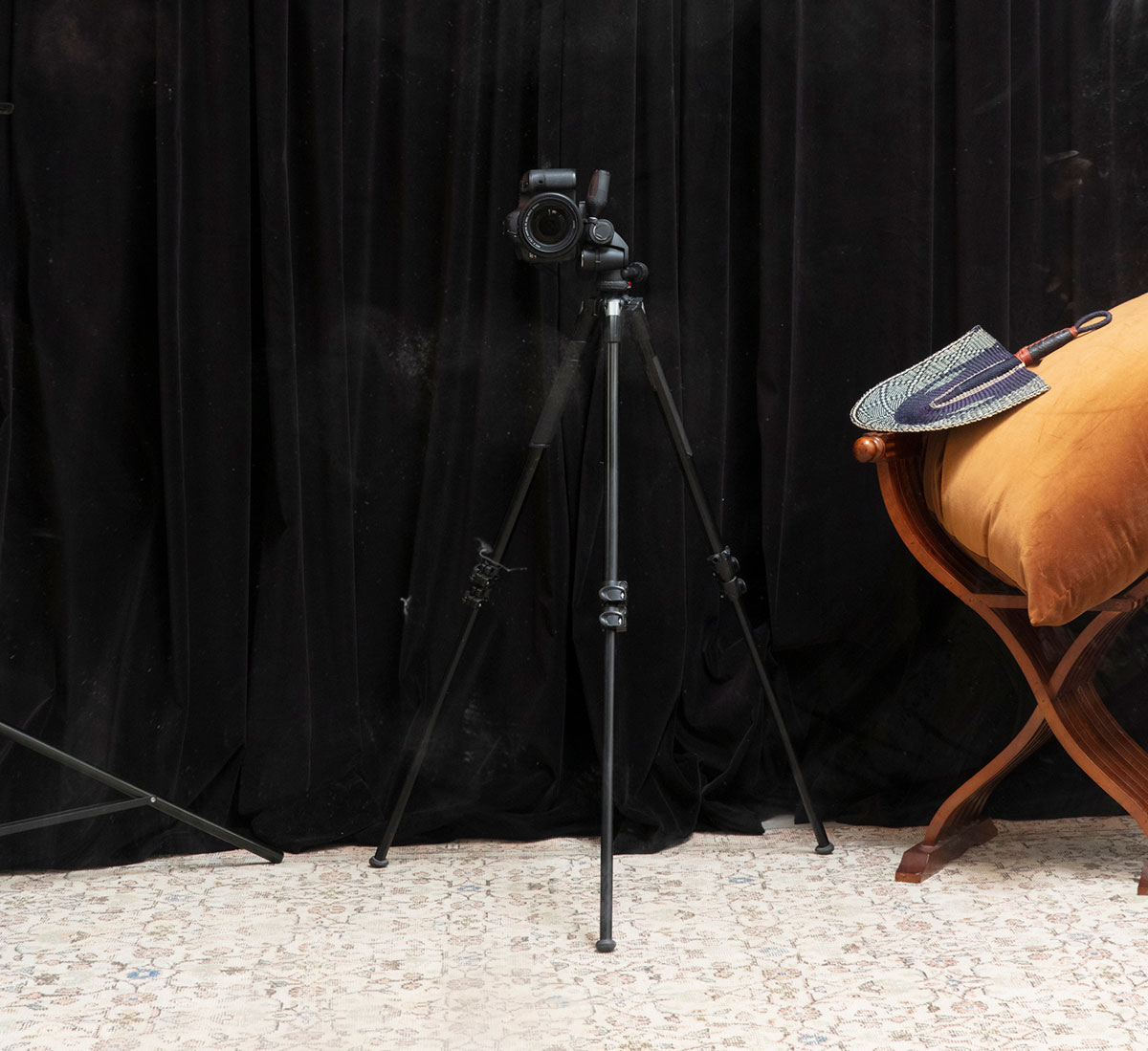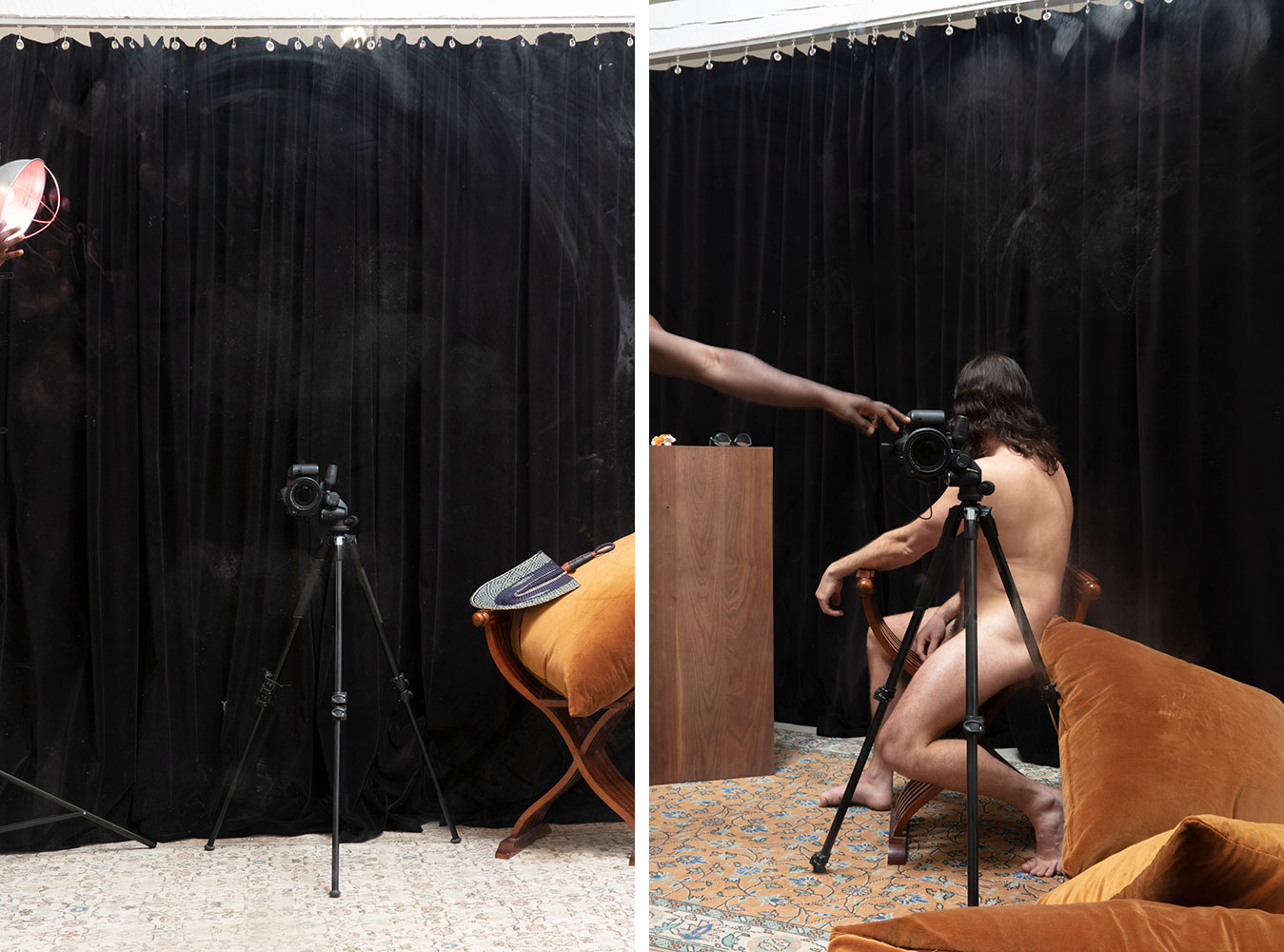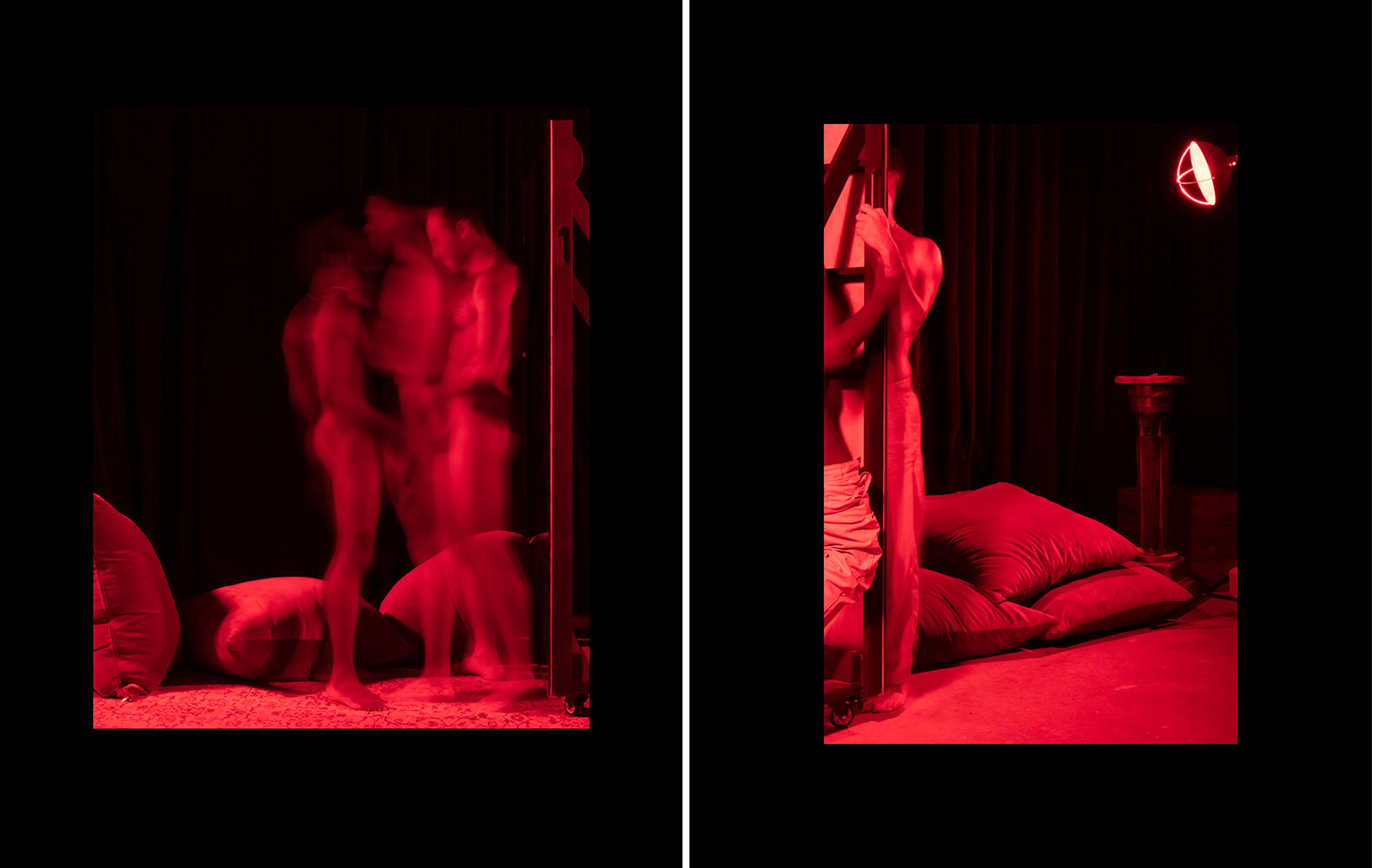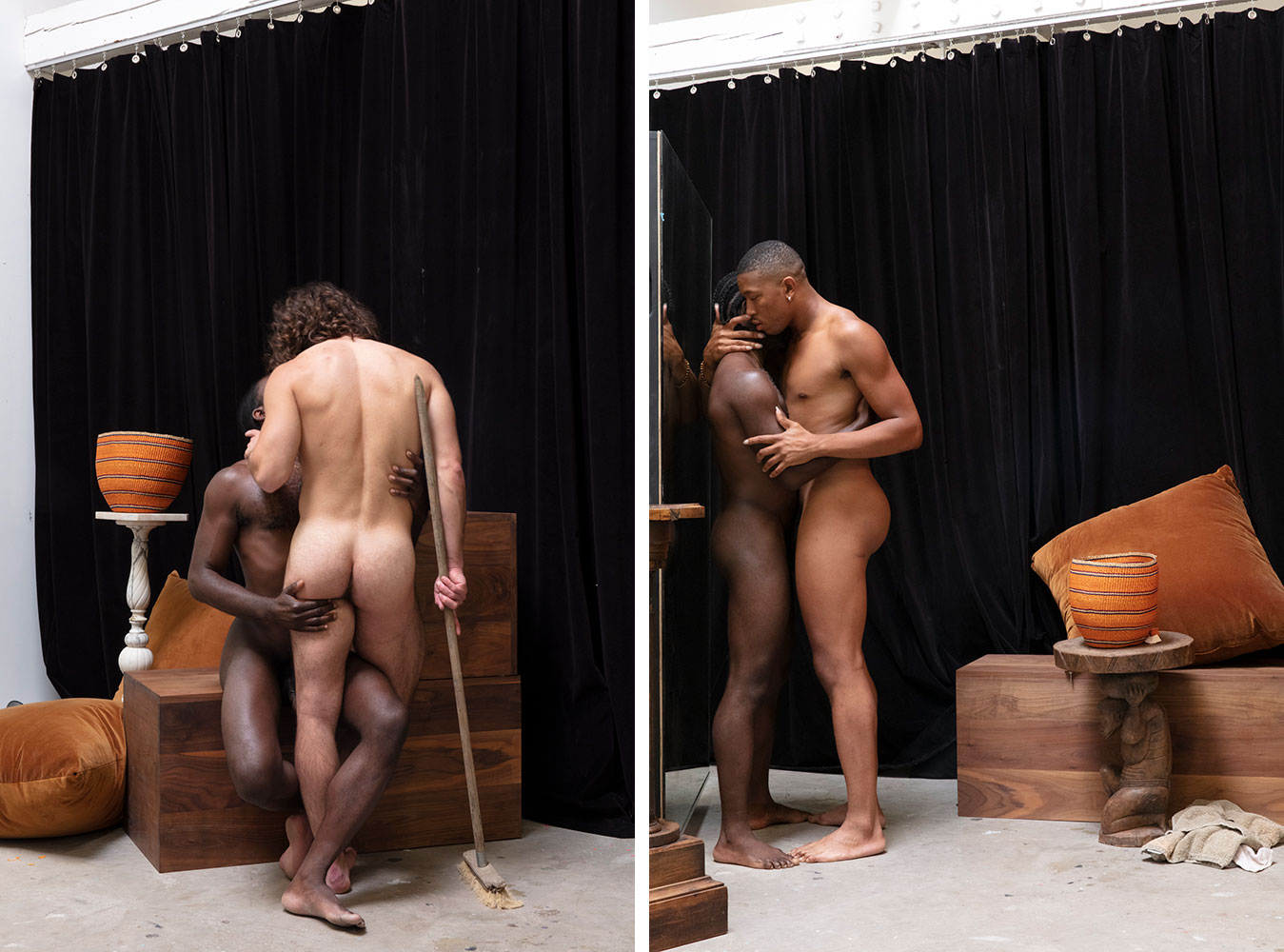PHOTO: Paul Mpagi Sepuya-Daylight Studio/Dark Room Studio
 Paul Mpagi Sepuya makes photographs of friends, artists, collaborators, and himself that challenge the history of photography and deconstruct traditional portraiture through layering, fragmentation, mirror imagery, and the perspective of the black, queer gaze. Sepuya’s photography is grounded in the studio as a site through which people, objects, and experiences are both positioned and displaced.
Paul Mpagi Sepuya makes photographs of friends, artists, collaborators, and himself that challenge the history of photography and deconstruct traditional portraiture through layering, fragmentation, mirror imagery, and the perspective of the black, queer gaze. Sepuya’s photography is grounded in the studio as a site through which people, objects, and experiences are both positioned and displaced.
By Dimitris Lempesis
Photo: Deichtorhallen Hamburg
Paul Mpagi Sepuya in his exhibition “Daylight Studio / Dark Room Studio” presents a new works from his ongoing series with the same name. With his “Daylight Studio” works Sepuya weaves together histories and spaces of possibility of the portrait with contemporary interpretations of the portrait. Conceptual and aesthetic devices of 19th and early 20th century studio photography are reinvented to illuminate contemporary issues of portraiture: the interaction of photographer and sitter, the interior with all its symbolically loaden details and requisites and not lastly the space itself as an intimate, safe space of playfulness. In the “Daylight Studio” and related bodies of work like “figures, grounds and studies” (2015-17) and “Dark Room” (2017-21), the artist has been interested in centering subjective and material positions of blackness and queer-homoerotic desire in a conversation about the emergence, contemporary moment and possible future of the medium. The pictures do not aim to strictly define but rather question and reflect on the constructions of gendered and racialized sexuality. Sepuya the use of daylight and found tropes and requisites of historical studio photography as concepts setting them in a new context. He began expanding the frame of his photographs by including the studio itself as a subject of the work. From there, he began looking at the history of these depictions going back to the 19th century. Based on this, he began gathering and collecting objects, both contemporary, historic and antique that reference the tropes and decorations of the 19th to early 20th century photographer-artist studio. In the history of photography, this period marks the height of Western-European imperialism in Africa and South Asia. Through the appropriation and reinterpretation of the objects in the image, Sepuya creates a backdrop that reflects on the relations of property and difference and ultimately attempts to dissolve them completely. In his “Daylight Studio” works, the people portrayed oscillate between portrayed subject and stylized model study – their interactions, poses and self-presentations largely self-selected rather than dictated by the artist. Most of them are his friends and befriended artists. The personal connection creates a special space of trust and intimacy – the studio becomes a private stage that invites people to experiment and play with self- presentation. Sepuya himself takes up the role behind the camera, the invisible worker who maintains the space. At the same time, he uses the studio as a space for self-reflection, a space of hyper-awareness of his own body and his role as a photographer in relation to all the objects and historical references surrounding. Often, the camera itself is in the picture, presenting the viewer with the powerful tool of image making and identity construction. The use of mirrors and already printed photographs reveals multiple perspectives, nests the images, makes invisible things visible and, as it were, holds up a mirror to the viewer. By clearly revealing all these conditions of studio photography, he draws attention to the act of viewing and asks us to reconsider our relationship to the subject as much as our own. In contrast to this self-reflexive and symbolic nature of the Daylight Studio works, Sepuya’s “Dark Room Studio” photographs emphasize the formal and technical elements of photography. Many of the these works are illuminated only with red safety lamps, thus making the depicted bodies appear almost like distortions in their movements and interactions in the images, some of which are barely visible and are created by an extended exposure time of several seconds. In this way, they are reminiscent of early daguerreotypes or photo-historical studies such as Eduard Muybridge’s Motion Studies – of everything that was not captured on plates, negatives and prints – and of the possibilities of creating references between present and past times. The images produced by dye-sublimation printing are unreproducible and unique.
Photo: Paul Mpagi Sepuya, Daylight Studio Mirror (0X5A5713) {detail}, 2021, © Paul Mpagi Sepuya, Courtesy the artist and Galerie Peter Kilchmann, Zurich / Paris
Info: Deichtorhallen Hamburg, PHOXXI (Temporary House of Photography), Deichtorplatz 1, Hamburg, Germany, Duration: 25/11/2022-26/2/2023, Days & Hours: Tue-sun 11:00-18:00, www.deichtorhallen.de/

Right: Paul Mpagi Sepuya, Daylight Studio Mirror (0X5A0004), 2021, © Paul Mpagi Sepuya, Courtesy the artist and Galerie Peter Kilchmann, Zurich / Paris

Right: Paul Mpagi Sepuya, Dark Room Studio (0X5A4918), 2022, © Paul Mpagi Sepuya, Courtesy the artist and Galerie Peter Kilchmann, Zurich / Paris

Right: Paul Mpagi Sepuya, Daylight Studio Mirror (0X5A4577), 2021, © Paul Mpagi Sepuya, Courtesy the artist and Galerie Peter Kilchmann, Zurich / Paris
